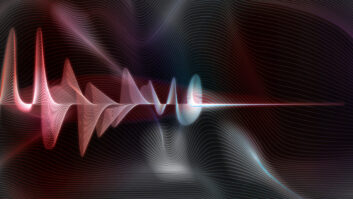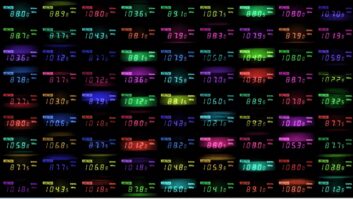The Sunday sessions of the Broadcast Engineering Conference at the upcoming NAB Show feature papers on a number of important technology advances. One of the most promising is SSBSC.
FM stereo transmission using single-sideband suppressed carrier (SSBSC) modulation is the focus of a presentation by Frank Foti.
Foti, founder and president of Omnia Audio, resurrected interest in SSBSC in 2010 and presented a paper at last year’s show. This year he’ll discuss more details, including real-world field testing results underway in a number of markets.
SSB for FM was first discussed by Bob Tarsio in a 1987 NAB paper and again at the 1997 NAB by Bill Gillman. SSBSC potentially could replace the standard DSBSC (double sideband) generation used since stereo FM became law 51 years ago. It promises to reduce stereo noise and multipath degradation in existing receivers as well as improve SCA, RDS and HD Radio performance.
“Implementing single-sideband suppressed carrier on an existing FM station is as easy as selecting this mode in an audio processor equipped with SSB,” Foti told Radio World. Stations wishing to deploy SSBSC for testing also need to secure Special Temporary Authority from the FCC in order to comply with the rules.
As of this writing, the Omnia.9 and 11 models FM processor/stereo generators include SSBSC, as does the Orban Optimod-FM 8600. Wheatstone has confirmed it is lab-testing SSBSC in its Vorsis FM processor. Older units may not be capable of SSBSC retrofits because of the extra DSP processing horsepower needed to generate this mode properly without excessive delay.
(click thumbnail)
Spectrum analyzer views of the FM baseband spectrum. With DSB, left, we see modulated spectrum on each side of the 38 kHz suppressed carrier marker. With SSB, right, we see mod only below 38 kHz in the lower sideband (LSB) region with nothing above in the upper sideband (USB) region.

Foti is aware of stations testing SSBSC on the air in Boston, Philadelphia, Atlanta, Cleveland, Columbus, Dayton, Central Pennsylvania and West Virginia; he says there are others.
“The feedback is a noticeable reduction of blending in a mobile receiver. I now have, and will show part of this at the NAB presentation, videos that were taken in a mobile environment, where you can see the route driven, along with the terrain, and hear the audio from the receiver.” (See a link to one video at the links page for this issue, radioworld.com/Mar-28-2012.)
“There’s a segment, where the multipath in the DSB mode is so severe, the audio is a tune-out. Yet, in the exact same location, using SSB, the audio is most definitely listenable, with only a few hits of multipath. This was done using the same radio station as a test example.”
The theoretical amount of broadband noise reduction in receivers that decode SSBSC has been calculated at 3.7 dB. However, to the casual listener, the improvement is much greater, according to Foti.
“Due to the triangular rise in noise across the FM channel at 6 dB per octave, stereo noise is most severe in the upper sideband. At high frequencies, where all the annoying hiss is easily heard, the noise improvement is close to 10 dB. I will share the test results about this in the NAB presentation.”
Improvement around town
Radio World contacted Brian Kerkan of the Cayuga Broadcast Group, who is running SSBSC on WQNY(FM) in Ithaca, N.Y., a country station.
“WQNY had a translator previously that filled in the gaps downtown, and suffers from multipath and blending in downtown Ithaca,” Kerkan said.
“We have done some field testing with various receivers, and have found an improvement in areas around town. What I have observed is less blending and better stereo separation. This has also been noticed by the PDs of our stations.”
SSBSC certainly appears to be a win-win for the radio industry based on the testing being done; but all interested observers want to know if there is any downside to its widespread deployment.
“Thus far, I do not see any downside,” Foti said. “My recommendation is that we consider this as an optional transmission method. It’s backward compatible; and to date, we have not received a single negative comment about compatibility, or that transmitting SSB degraded the FM service.”
(click thumbnail)
Another spectrum analyzer shot of the SSB baseband (left) and the expanded LSB area (right).

Bob Orban, founder of Orban Associates and designer of the Optimod 8600, is supportive of the SSBSC initiative. He commented on it in a December 2010 issue of Radio World (also linked at radioworld.com/Mar-28-2012).
Orban is more cautious about possible side effects produced by the SSBSC waveform, and urges that extensive field and lab testing be done before any FCC regulatory changes or additions to the rules are proposed.
Asked by email regarding his current thoughts about SSBSC, Orban told Radio World he does agree that SSBSC offers a “modest reduction” of apparent multipath and noise, but observed that actual stereo subchannel multiplex power is doubled in SSBSC. He also is concerned about the vast universe of existing radios in use, some of which may have compatibility issues like the Sony XDR-F1HD.
“Any radio that uses noise or spectral contamination in the quadrature component as a criterion for activating blend-to-mono is likely to misbehave,” says Orban.
Perhaps of more importance, Orban maintains that additional peak limiting needs to be employed in SSBSC to maintain equivalent loudness.
“The added composite peak limiting can produce audible side effects, depending on the target loudness of the transmission. This seems to be a ‘laws of physics’ issue — the SSB waveform cannot exploit the interleaving property of the DSB waveform and thus requires more peak limiting,” Orban wrote.
Frank Foti maintains that “using SSB created absolutely no change to peak modulation levels” and that “modulation level and density is the same for DSB and SSB. At least it is in our application of the technology.”
The presentation “FM-Stereo Transmission using Single-Sideband Suppressed Carrier (SSBSC) Modulation” is scheduled for Sunday morning as part of the Broadcasting Engineering Conference session “Advancements in Radio Technology.”
Tom McGinley is technical adviser to Radio World.







